Proofreading in FlyWire can be fun and relaxing, and it’s tempting to comb over your cell until you can find every tiny merger or missing twig.
However, for the sake of science, proofreading should have a limit!
Of course, we want to make sure our cells are scientifically accurate! But the difference between 99% accurate and 100% accurate is negligible, while the time it takes to get from 99 – 100 can be enormous! The more you go searching for every tiny missing piece, the more it becomes like trying to find a needle in a haystack.
You may be asking, when is enough enough? How can I know that my cell is ready to complete if it’s not perfect?
Let’s go over some tricks and tips to decide when it’s time to stop proofreading.
When to check for extensions
When checking for extensions, go MACRO not MICRO. You want to be looking at the overall morphology of the cell, and not get stuck in the weeds by checking each tiny spindly branch.
Look for places where you notice something isn’t quite right.
- Is the end of the branch suspiciously thick?
- Is the branch shorter than the others around it?
- Is there a gap in the dendritic arbor?
- Does something cut off abruptly instead of tapering out?
These are places to investigate.
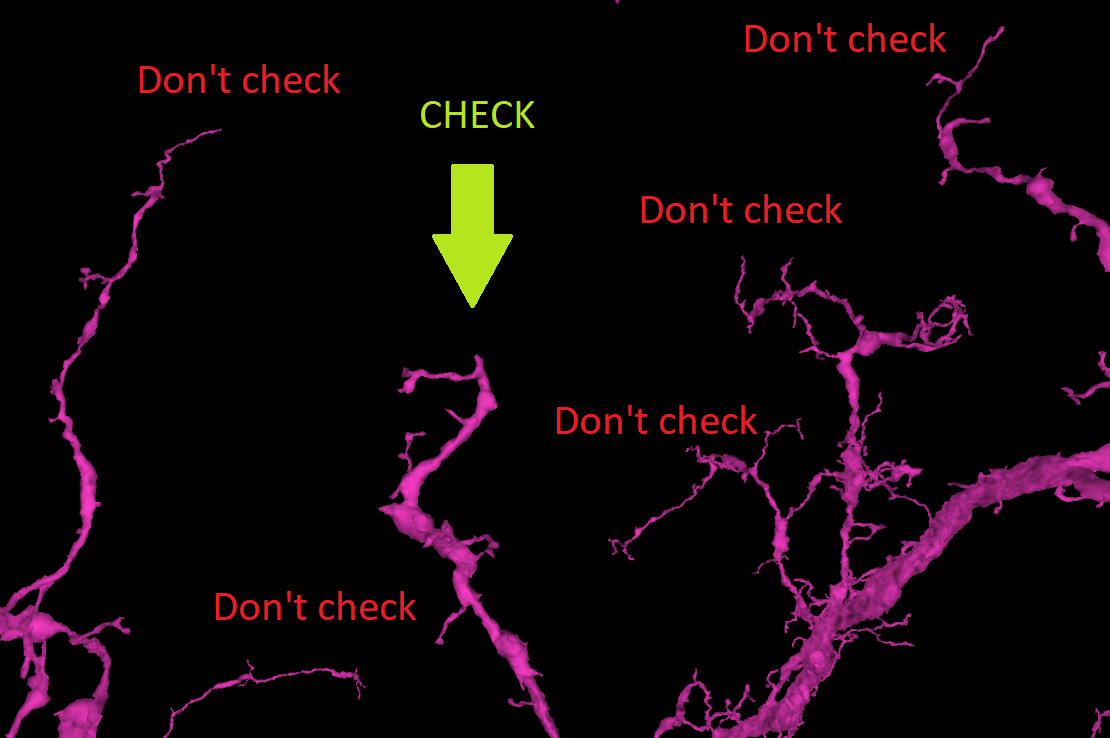
When to remove mergers
You don’t need to scroll up and down every branch in the 2D to find mergers. Use your investigative skills to discover them in the 3D instead!
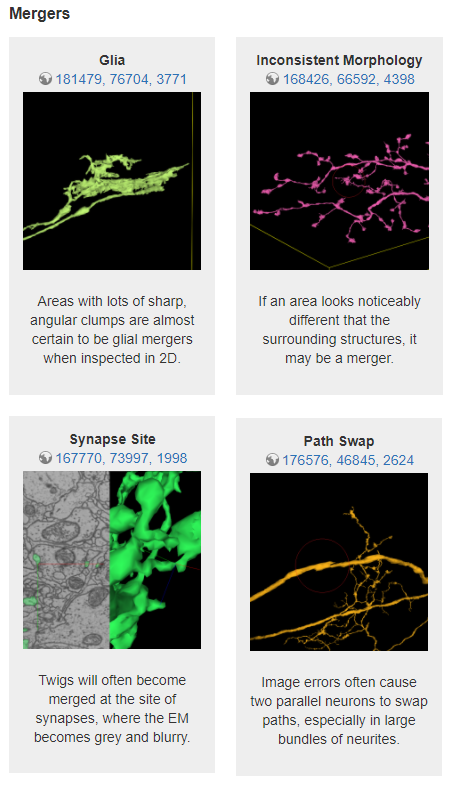
Look for areas with
- Inconsistent morphology
- Branches that flow in odd directions
- Strange looking connections
It is NOT necessary that you remove every tiny merger bit, however. If you find a small merger bit that does not affect the overall structure of the cell, you may continue on without removing it.
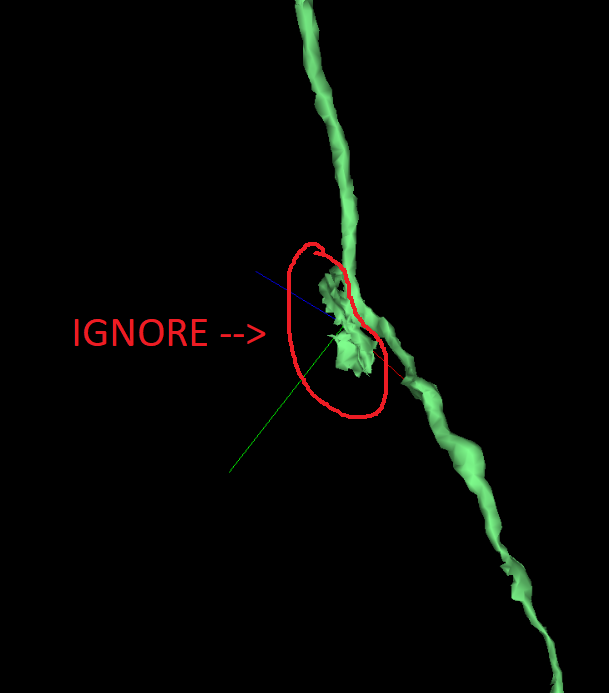
Is my cell complete? Checklist
When deciding if your cell is complete, it’s good to know if it has all its parts in order. Let’s learn what FlyWire cells will and won’t have. Pay attention to exceptions, so you’re not searching for something that isn’t there.
Q: Will my cell…
- have a cell body?
- have an axon?
- have a dendritic arbor?
A:
- Almost all the cells we are proofreading have cell bodies. However, some cells, like these ones, extend into a different part of the optic lobe that is beyond the boundaries of our dataset. If your cell is missing a soma, check to see if it may be near the edge of the dataset. If it is, you may complete with no cell body.
- Many cells, but not all, have axons. There are a fair number of FlyWire cells that do not have an axon. In these cells, the dendritic arbor has properties of both dendrites and axons. See for example, Cell Type 1 in the “What will my cell look like?” blog post.
- Your cell should have dendrites, but may not have the “classic” arbor that you are used to seeing. While some optic lobe cells in fly do have large, branching arbors, others may have small clusters of dendrites, or shorts spines that do not really cluster at all.
Help! I can’t find…
If you’re pretty sure your cell SHOULD have a certain structure, but you are struggling to locate it, here are a few tips to help you out!
Where is my CB?
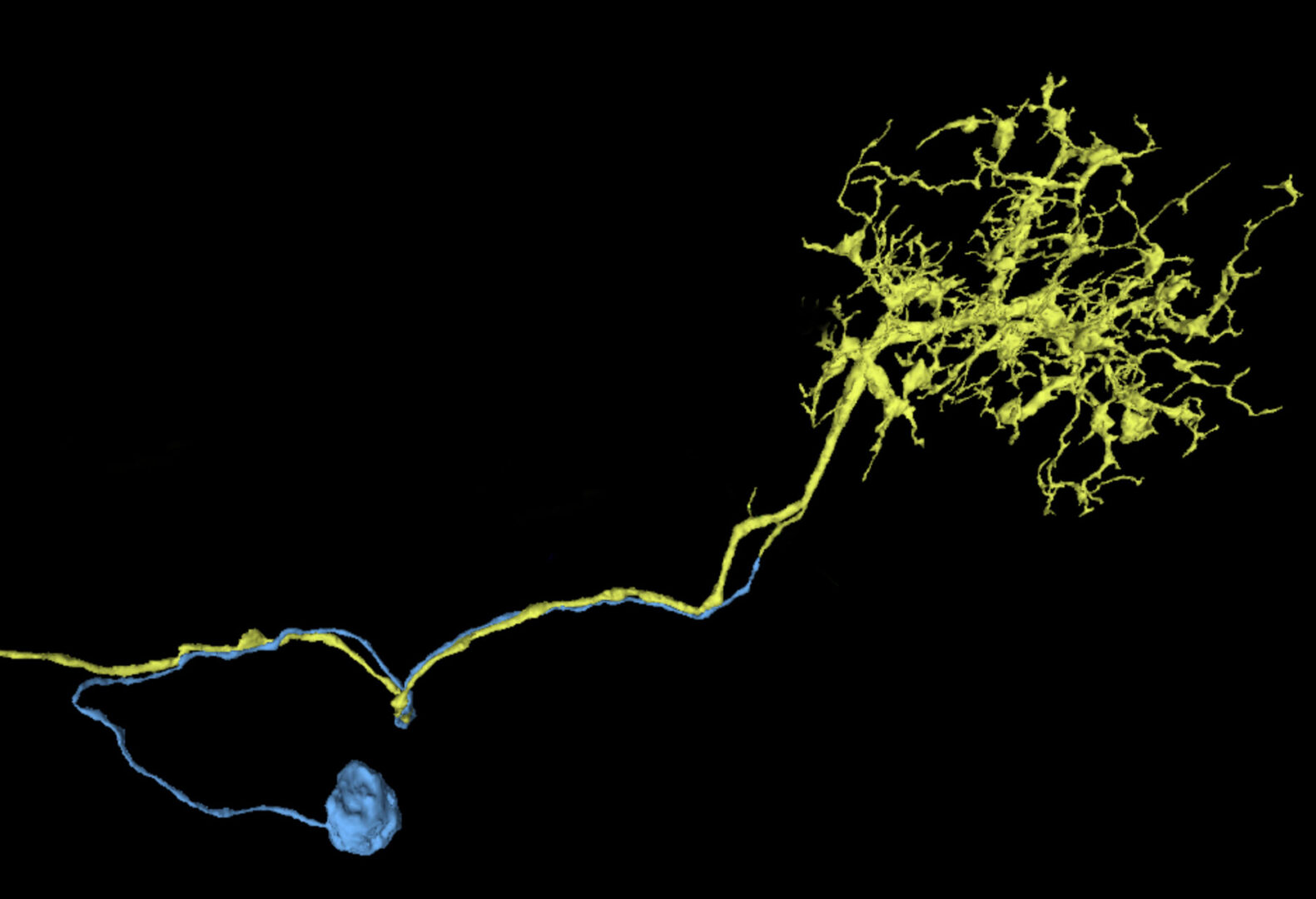
A common point of failure on FlyWire cells is the connection point between the soma tract and the main backbone of the cell, especially when the cell autofasiculates (doubles back on itself).
If you’re having trouble locating your soma, try finding it’s tract along the cells backbone.
- Search up and down the backbone in 2D for a place where there is a visual break. This is probably where the missing soma tract belongs
- If you are having trouble locating the soma tract in 2D, try looking for a branch that runs in parallel to the backbone. That may be your winner!
- The break point is usually closer to the dendritic arbor, so check in that area (remember dendrites are the more “spiky” looking ones)
- When in doubt, click around! There’s no harm in adding in random segments – you can always remove them. Similarly structured cells near the one you’re working on may also offer clues for what you’re looking for.
Practice: See if you can find the soma on this cell. Unhide the annotation layer to see if you got it right!
Where are the cell branches?
Does it seem like something could be missing but you can’t quite put your finger on it? Check out these common points of failure to see if branches of your cell need extra attention.
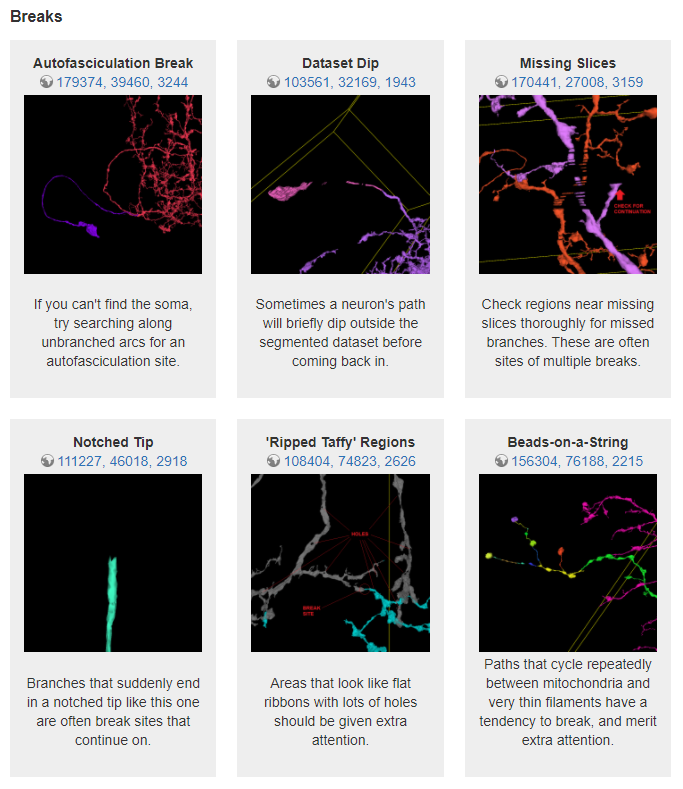
Keep in mind
Efficiency is key! Look at your cell’s overall structure and decide if it’s ready for completion. If it’s missing a part that most cells typically have, could there be a reason for that?
If you’re struggling or want a 2nd opinion, ask for help! The FlyWire Q&A Log, FlyWire Discussion Board, FlyWire Chat, and FlyWire support email (support@flywire.org) are all great places to get a helping hand.
Cheers and happy proofreading! For science!
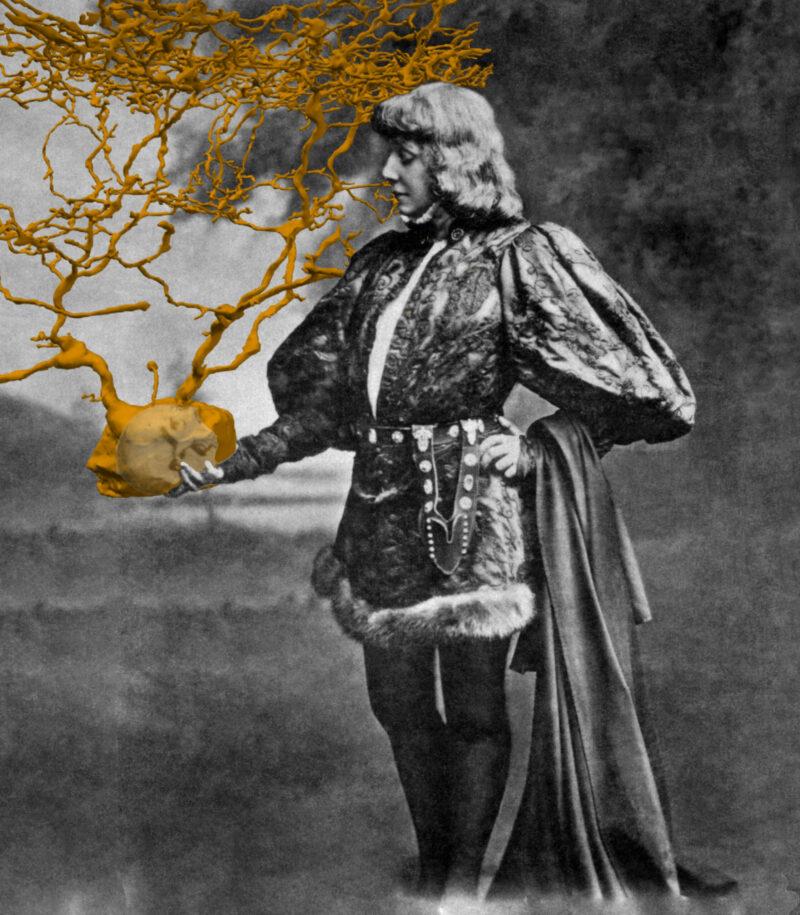
2 responses to “To trace, or not to trace? How to know when your cell is finished”
[…] How to know when your cell is complete. […]
[…] More tips on cell completion here. […]